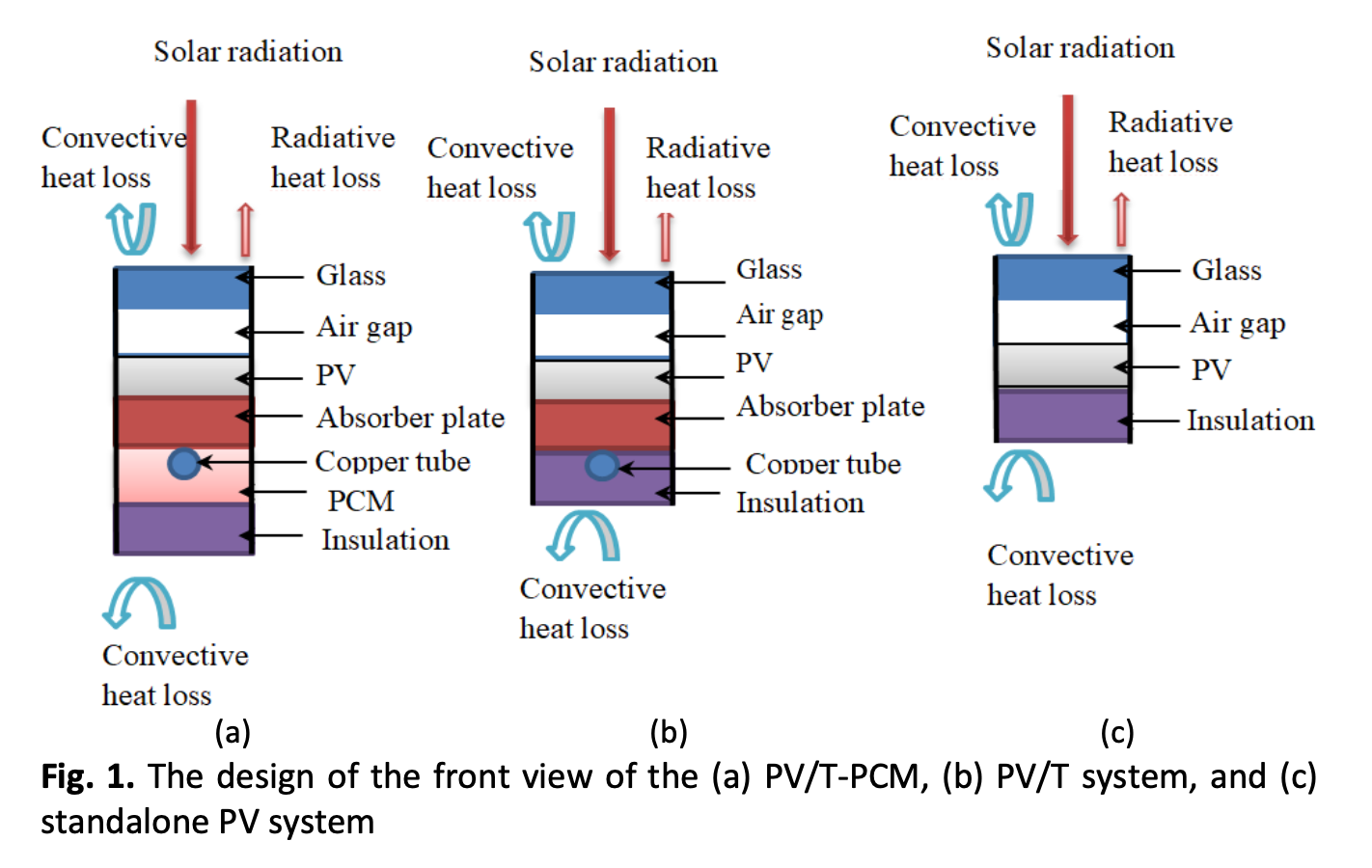Numerical Analysis of the Phase Change Material Impact on the Functionality of a Hybrid Photovoltaic Thermal Solar System in Transient Conditions
DOI:
https://doi.org/10.37934/arfmts.112.1.121Keywords:
Photovoltaic thermal system, phase change material, performance assessmentAbstract
Combining phase change material with a hybrid photovoltaic thermal system can be a reasonable solution for excessive temperature distributions and inadequate heat control in traditional photovoltaic thermal modules. This work proposes a mathematical model to assess the transient processes of a hybrid photovoltaic thermal solar system with phase change materials in comparison to a conventional photovoltaic panel. The studied hybrid module is composed of (the cover glass, photovoltaic plate, absorber plate, phase transition materials layer, and water in the tubing). The employed system parameters were selected on an energy-saving basis in the different system layers. The differential equations determining energy exchange between the different parts in both systems were numerically solved using the Finite Difference Method applied to MATLAB software. The transient model's validity is first tested by comparing the prediction temperatures of each layer of the photovoltaic thermal system with those numerical and experimental studies in literature in which the maximum discrepancy is less than 1.5°C. Then, the results of the transient model are investigated in real outdoor weather conditions using meteorological data. The results illustrated that the hybrid module diminishes the temperature of the photovoltaic layer by roughly 21.9°C compared to the standalone photovoltaic panel, leading to a 1.95 % enhancement in electrical performance.
Downloads

































